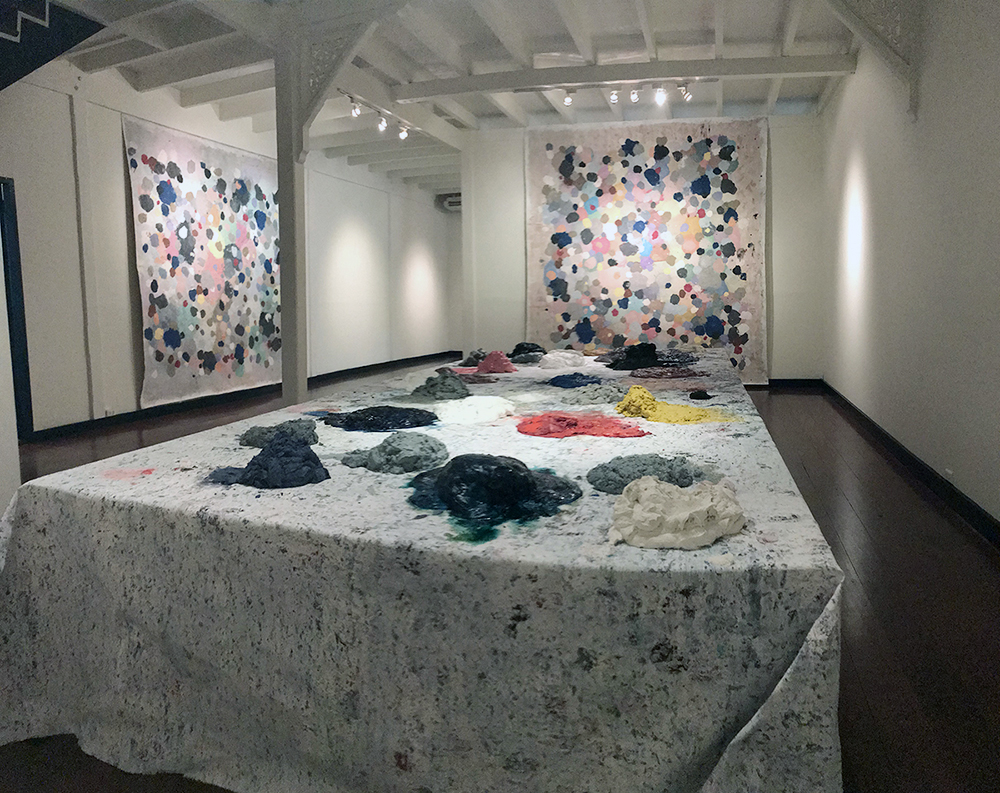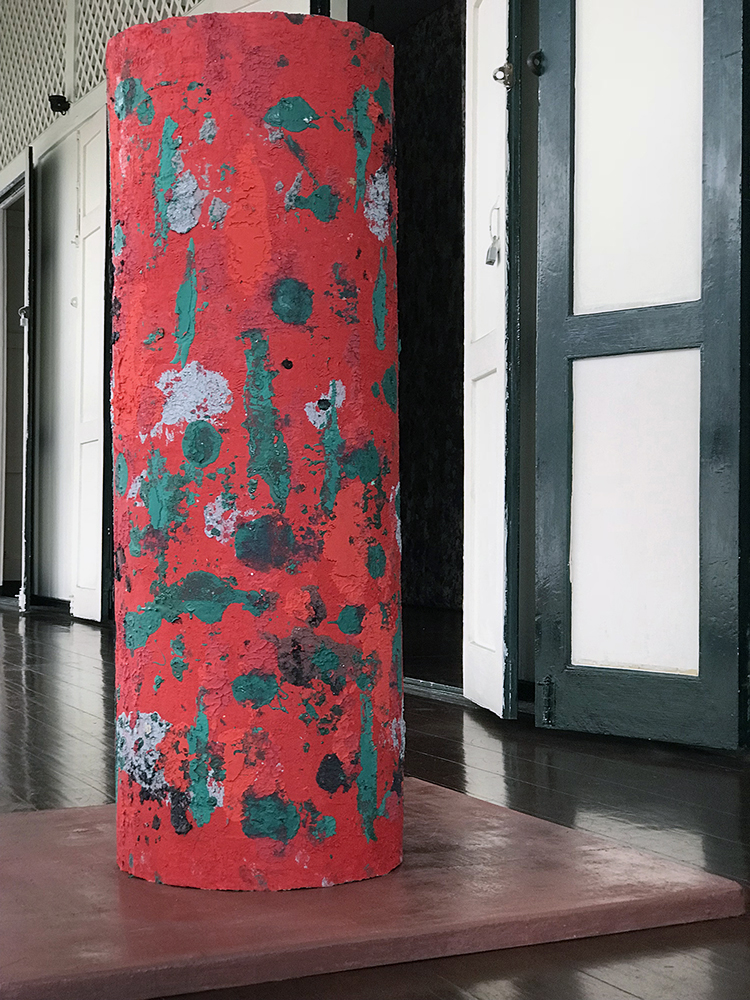Shows
Mit Jai Inn’s “Beautiful Futures”


Upon arrival at Bangkok’s H Gallery, visitors to Mit Jai Inn’s latest show, “Beautiful Futures”—a sneak preview of his work at this year’s Biennale of Sydney—must first ring the doorbell. After they are buzzed in and step into the exhibition space, they are forced to commit an act that would normally be considered sacrilege within art world circles: step on the artist’s canvas, which spreads across the floor, covering the entire walking surface inside the gallery near the entrance. We have no choice but to plod on and feel the physical presence of color and its suppleness against our soles—a new, pleasurable sensation for most who enter. The choreographed entry is a call for participation, one that is further offered in the main hall where visitors are encouraged to plunge their fingers and hands into mounds of sticky paints—a special mix that Mit invented out of gypsum powder, linseed oil, oil color and energy efficient, glow-in-the-dark LED paint. The concoction’s formula is tailored by the artist to suit the climate of each location of the exhibition—first Bangkok, then Sydney—all to facilitate a site-specific interaction, and thus push the possibilities of immersive action painting.

After interacting with the setup, visitors could head up to the second floor, where an overwhelming labyrinth of hanging, floor-to-ceiling, double-sided canvases coated with multicolored splatters awaited. The artist told me that, for him, these works contain “an effect of camouflage”—a reference that connects the current exhibition, specially conceived for the spaces of H Gallery, with the “Junta Monochrome” series displayed at Gallery VER in 2016. While the patchy application of paint in the “Junta Monochrome” series referred to the disguised presence of the military when it occupied Thai cities and unjustifiably turned the civilian space into a military camp, the use of this technique in “Beautiful Futures” is directed at the city’s middle class—most of whom, according to the artist, have no particular political position, and adjust themselves to the stances held by their different interlocutors. “At the vernissage, some of the viewers told me they were repulsed by the double-sided canvases upstairs because the color, together with the texture of the works, reminded them of reptile skins, which can adjust its appearance to suit the environment,” Mit recounted as an ironic anecdote.
By constructing an environment where visitors are immersed in a hazy multitude of pigments, the coming together of which renders anything but proper, elegant, and sophisticated compositions, the artist further probes the political aspects of color, which he views as a tool that can be exploited either by the state or any political groups to control a population’s tastes, identities and action. “When you mobilize a crowd, color is always used as part of such mobilization; it is a vital part of making people feel they belong together as one. Likewise, each society has its own rules and these rules are reflected in the control of which color is acceptable. In Europe, for instance, you can feel that the dominant code of colors either in architecture or in the way people are dressed boils down to grey and brown [which reflects conservatism],” the artist explains. In Thai society, on the other hand, gold is of special significance, particularly in relation to the Thai version of the Indian epic Ramayana, known as Ramakien, the narrative of which buttresses the structure of power in the nation, and which is dominated by the color. The artist describes another instance where a color scheme represents a particular social discourse: “When a ‘kathoey’ [transgender person] is dressed up, it is always in a color scheme deemed ‘overdone.’”
In this exhibition, Mit gives his visitors a melange of anti-establishment palettes. His is an irreverent mix that seeks to undo the values that come with a particular set of normative, polite and respectable schemes. While the exhibition’s title “Beautiful Futures” can on the one hand be read as an ironic jab, given the current shakey political situation in Thailand, Mit’s elaboration on how color can be used politically is a sincere attempt at redeeming the agency of this much overlooked artistic material. This is achieved by giving the visitors of his show a chance to interact and be in as close proximity with “illegitimate” and “subversive” pigments as possible, activating what is typically a passive component of an artwork. The overpowering smell of paint accompanying the fantasia of colors, as we come into uncomfortably close contact with the materiality behind these hues and shades, only adds to this effect of unsettling visitors’ sensibilities.
“In order to push out old colors, we must use new ones,” said the artist. Indeed, what Mit has done in “Beautiful Futures” is give color new efficacy.
Mit Jai Inn’s “Beautiful Futures” is on view at H Gallery, Bangkok, until March 30, 2018.







